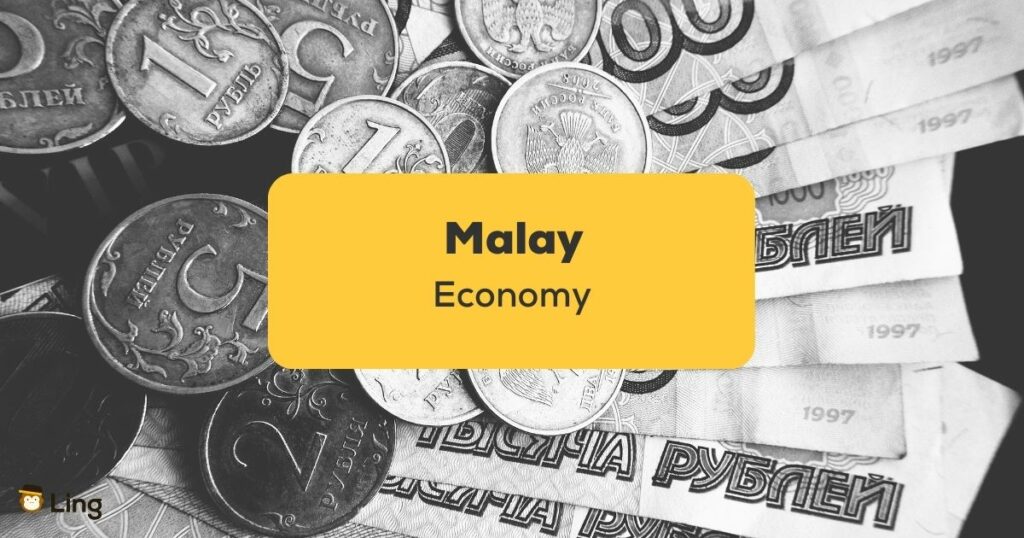The Malay economy has undergone significant growth and development in recent years. With its rich natural resources, strategic geographical location, and growing population, Malaysia has emerged as one of the key economic players in Southeast Asia. This article provides an overview of the Malay economy, exploring its historical background, economic structure, key industries, trade relations, government policies, and the Malay words related to it.
Ever planned to move to Malaysia? If yes, then learning about the current state of their economy is a must. When I visited the country before, I was truly amazed by the incredible development and progress they have achieved. Comparing it with my own country, I couldn’t help but notice the stark differences in economic growth and opportunities. In this article, we will delve deeper into the Malay economy and explore the reasons why Malaysia has become an attractive destination for individuals seeking new horizons.
Malaysia’s Economic History
Malaysia’s history is intertwined with colonization, particularly under British rule. During the colonial era, the country primarily served as a supplier of raw materials to the British Empire. The British exploited Malaysia’s abundant natural resources, such as rubber and tin, to fuel their own industrialization.
Over time, the exploitation of these resources had a profound impact on the economy, shaping its structure and development. Malaysia’s economy became heavily reliant on the export of raw materials, leading to a lack of diversification and vulnerability to global market fluctuations.
However, Malaysia’s journey toward economic transformation began after it gained independence in 1957. The country recognized the need to reduce its dependence on primary commodities and embarked on a path of industrialization and diversification.
The government implemented policies to promote manufacturing and attract foreign direct investment (FDI). These efforts aimed to develop a more resilient and sustainable economy by shifting towards higher-value-added industries.
The establishment of the Malaysian Industrial Development Authority (MIDA) in 1967 played a crucial role in attracting FDI. MIDA facilitated investments, provided incentives, and streamlined bureaucratic processes, making it easier for businesses to set up operations in Malaysia.
| English | Malaysian |
|---|---|
| Colonization | Penjajahan |
| British rule | Pemerintahan British |
| Raw materials | Bahan mentah |
| Rubber | Getah |
| Tin | Timah |
| Industrialization | Pengindustrian |
| Diversification | Pemangkin pelbagai sektor |

Malaysia’s Economic Structure
The economic structure of Malaysia has evolved significantly over the years, transitioning from an agrarian economy to a more diversified and industrialized one. This section explores the key sectors that contribute to Malaysia’s economic growth and development.
- Manufacturing Sector: The manufacturing sector is a vital pillar of Malaysia’s economy, contributing significantly to GDP and employment. It encompasses various industries, including electronics, automotive, pharmaceuticals, textiles, and machinery.
- Services Sector: The services sector plays a crucial role in Malaysia’s economic landscape. It encompasses a wide range of industries, such as finance, tourism, telecommunications, logistics, healthcare, and education. The services sector has experienced substantial growth, driven by domestic demand and the country’s attractiveness as a regional hub for service-related activities.
- Agriculture Sector: Although Malaysia has transitioned into an industrialized economy, agriculture remains an important sector. It provides employment opportunities, particularly in rural areas, and contributes to food security. Key agricultural products include palm oil, rubber, cocoa, rice, fruits, and vegetables.
- Mining and Quarrying Sector: Malaysia possesses abundant mineral resources, making the mining and quarrying sector a significant contributor to the economy. The country is known for its reserves of tin, bauxite, iron ore, coal, and various other minerals. Mining activities generate revenue and contribute to both domestic consumption and exports.
- Construction Sector: The construction sector plays a crucial role in infrastructure development and urbanization. It encompasses residential, commercial, and infrastructure construction projects. The sector’s growth is fueled by government initiatives, private investments, and urban development plans.
- Financial Sector: The financial sector in Malaysia comprises banks, insurance companies, asset management firms, and other financial institutions. It plays a critical role in facilitating economic activities, providing capital for investments, and supporting businesses and individuals in managing their financial needs.
- Energy Sector: The energy sector in Malaysia focuses on both conventional and renewable energy sources. The country is a significant producer and exporter of oil and gas, contributing to its energy security. In recent years, there has been a growing emphasis on renewable energy, including solar, wind, and biomass, to promote sustainability and reduce reliance on fossil fuels.
- Wholesale and Retail Trade: The wholesale and retail trade sector involves the distribution and sale of goods to consumers. It encompasses a wide range of businesses, from small retailers to large hypermarkets and shopping malls. This sector supports domestic consumption and contributes to employment generation.
- Technology and Innovation: Malaysia has placed a strong emphasis on technology and innovation to drive economic growth. The country has developed a vibrant tech ecosystem, promoting digitalization, startups, and research and development. This sector includes information technology, software development, e-commerce including headless architecture solutions, and other technology-driven industries.
- Real Estate and Property Development: The real estate and property development sector has witnessed significant growth in Malaysia. It encompasses residential, commercial, and industrial properties, as well as infrastructure projects. This sector contributes to economic growth, job creation, and investment opportunities.
Want to impress the locals? Here are the best words to use in Malay related to this topic:
| English | Malaysian |
|---|---|
| Manufacturing | Pengilangan |
| Services | Perkhidmatan |
| Agriculture | Pertanian |
| Mining | Perlombongan |
| Construction | Pembinaan |
| Financial | Kewangan |
| Energy | Tenaga |
| Wholesale | Borong |
| Retail | Runcit |
| Trade | Perdagangan |
| Technology | Teknologi |
| Innovation | Inovasi |
| Real Estate | Hartanah |

Items High In Demand Today
In the Malaysian economy, there are several sectors that typically experience strong domestic demand. These sectors are driven by factors such as population growth, rising incomes, changing consumer preferences, and government policies aimed at promoting domestic consumption. Here are some areas that often exhibit strong domestic demand in Malaysia:
1. Consumer Goods: Consumer goods encompass a wide range of products, including food and beverages, personal care items, household goods, clothing, and electronics. As the population grows and incomes rise, there is an increased demand for these goods, driven by household consumption.
2. Housing and Real Estate: The demand for housing and real estate in Malaysia is generally strong, particularly in urban areas. Factors such as population growth, urbanization, and changing lifestyle preferences contribute to the demand for residential properties, commercial spaces, and retail outlets.
3. Education and Training: Education is highly valued in Malaysian society, and there is a significant demand for quality education at all levels. This includes both formal education, such as schools, colleges, and universities, as well as vocational and skill-based training programs.
4. Healthcare Services: The demand for healthcare sales and services tax them, including hospitals, clinics, and medical professionals, continues to grow as the population ages and healthcare awareness increases. There is a rising need for quality healthcare facilities and services in both urban and rural areas of developed nations.
5. Food and Beverage: Malaysia’s diverse culinary culture and food-loving population contribute to the strong domestic and global demand for food and beverages. This includes dining out at restaurants, cafes, and food stalls, as well as the demand for food products in supermarkets and grocery stores.
6. Tourism and Hospitality: While the COVID-19 pandemic has temporarily impacted international tourism, domestic tourism remains a significant contributor to Peninsular Malaysia and several tourist countries in Southeast Asia. Domestic travelers explore various attractions, stay in hotels, dine in restaurants, and engage in recreational activities.
Learn Malay With Ling
Are you ready to embark on a journey of language learning and broaden your horizons? Look no further than Ling, an innovative language-learning platform designed to help you master new languages with ease and confidence. What sets this apart is its user-friendly interface and intuitive design. You can access the platform from your smartphone or tablet, making language learning accessible anytime, anywhere!
But the best part about Ling? The app’s gamified approach transforms the learning process into a fun and immersive adventure, keeping you motivated and engaged throughout your language-learning journey. So what are you waiting for? Discover Malay with Ling by downloading the app from the App Store or Google Play Store now!


































































